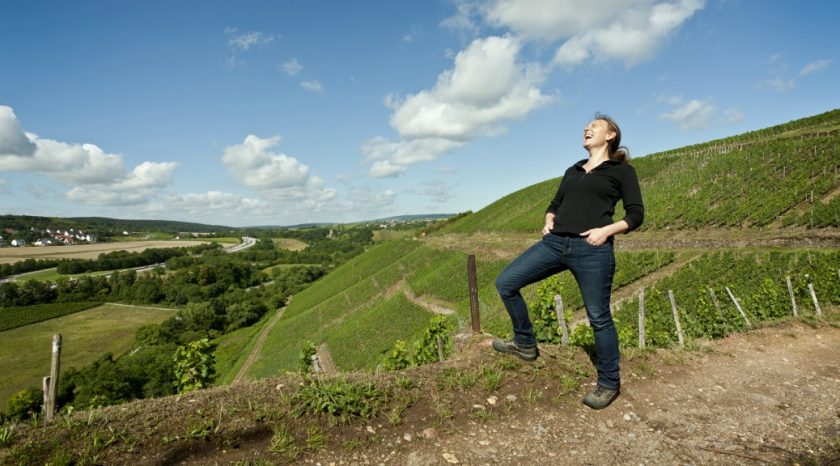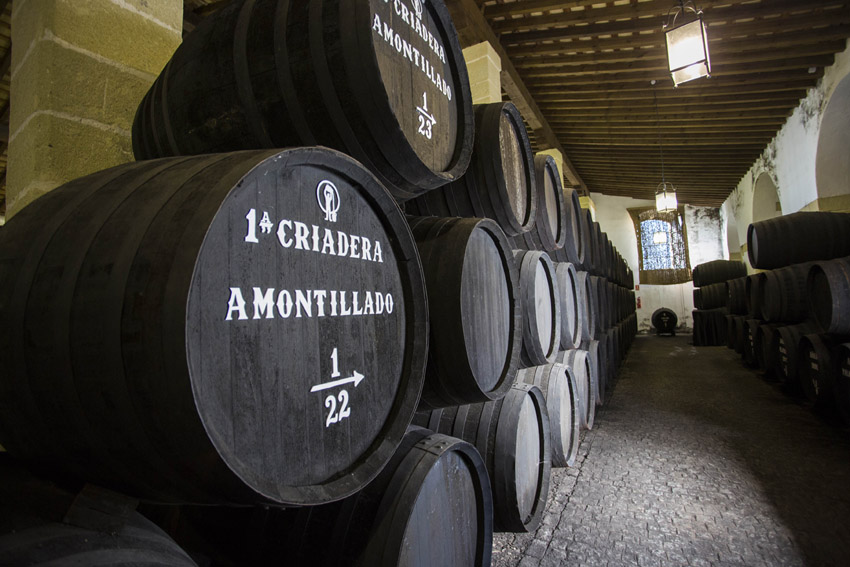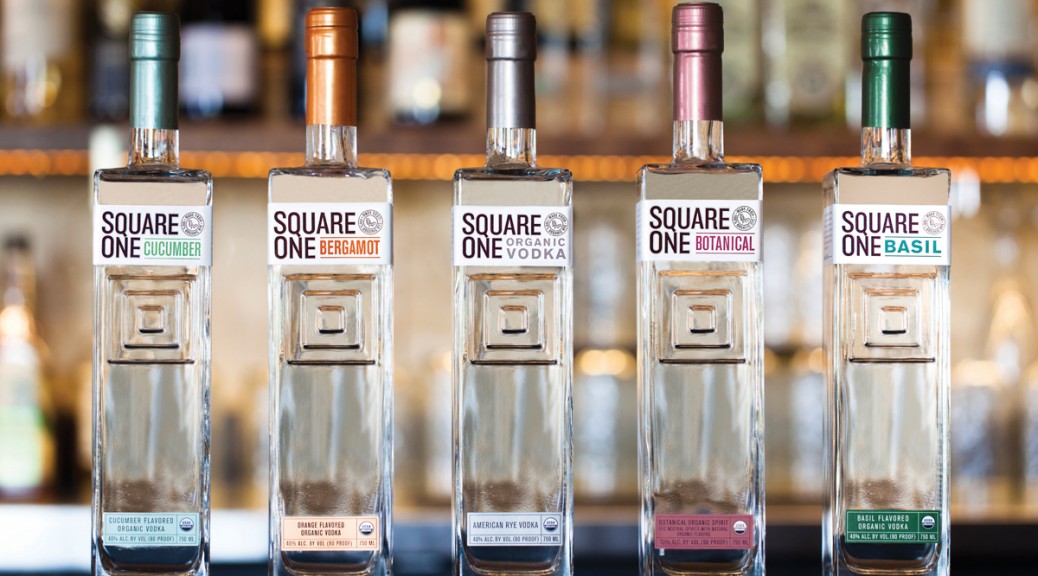“Once the grapes are harvested, once you pick, it is your job not to hurt anything and get out of the way. But before the grapes are ripe there are so many decisions you make, as a vigneron, which affect your quality. This is why I am always in the vineyards. I love it, and I am so happy here.”
Caroline Diel has firmly and assuredly taken her place at Schlossgut Diel, one of the greatest estates in the Nahe. She has the quiet confidence of a winemaker who is at ease with her craft, and knows her vineyards and their personalities like members of her family. When one generation takes over from the previous there is always some question about a shift in philosophy and changes in the wines. Caroline has made some adjustments at her family estate, but it is her philosophy towards the work in the vineyards and cellar that is markedly different from her father, Armin.
Armin Diel is a famous personality in the European food and wine scene, writing for the top European publication Gault-Millau for many years. He is a prominent and respected gourmet and has one of the finest palates in Germany. Armin’s image was very much that of a gentleman farmer.
Caroline strikes just the opposite figure and is most comfortable with her boots on in the cellar or in her Grand Cru vineyards. She and her husband Sylvain relax during fermentation by doing pigage in the open top fermenters of Pinot together. She studied winemaking at Geisenheim (the UC Davis of Germany) and went on to work at Domaine de la Romanée Conti, Robert Weil, Ökonomierat Rebholz, Toni Jost and others.
Vineyard work at Diel is meticulous and as natural as possible, based on what Caroline feels like the vines need in a particular vintage. “There are so many directions you can go with pruning, canopy management, cover cropping…many possibilities with the live vine. Once the grapes are harvested, once you pick, it is your job not to hurt anything and get out of the way. But before the grapes are ripe there are so many decisions you make as a vigneron which affect your quality. This is why I am always in the vineyards. I love it, and I am so happy here.”
The cellars at Schlossgut Diel date back to the 16th century and are some of the most beautiful in Germany. A very traditional approach is taken at the winery, and a majority of the wines are fermented in large barrels, with some smaller casks used for red wine (including used 4th and 5th use DRC barrels), stainless steel, and enamel tanks. Fermentations are ambient, and with the cool and naturally humid cellars the wines develop slowly and beautifully. We believe that while they are not the loudest or most robust wines being produced in the Nahe, they are among the very finest. They have an almost unmatched elegance and filigree worthy of the price of admission.
Most notably, Caroline has reduced the amount of residual sugar in the prädikat wines, following a more classic profile. We first noticed this shift with the 2012 vintage when her Goldloch Kabinett tasted remarkably clear and crunchy, especially for a riper vintage. The successive vintages follow this development and the wines below are unquestionably top of their class.
The Estate Wines
These wines offer value, sense of place, and longevity. Nahestein Trocken, sourced from young vines in the GG sites and Schlossberg, a 1er Cru site. The delicate and balanced Feinherb is the Nahestein with 18 grams of RS, picked slightly riper. The Estate Kabinett is superb, mostly from Goldloch and 30-40 year old vineyards. The Pinot is classic and Burgundian, aged 2/3rd in fourth and fifth use DRC barrels, and 1/3rd in 2nd and third use French oak. The rosé is a classic, similar to a Bandol rosé in its structure and ageability.
The Three Grand Crus
Goldloch | 8.5ha in total| Schlossgut Diel owns 5ha
With five hectares, Schlossgut Diel is by far the largest owner of this splendid and steep south-facing site. Supposedly gold was mined here in the 17th century. In the late 18th century, considering the prices these Rieslings fetched, the locals joked that the vineyard was a “gold mine for its owners”. The stony soils date from the Permian era (275 million years ago, the same time period and similar geology to the Heiligenstein in Austria) and has volcanic conglomerates with a thin layer of gravel and loam. This site produces more powerful wines, with great aging potential.
Burgberg | 4ha in total | Schlossgut Diel owns 2ha
Schlossgut Diel has only owned parcels in this steep site since the mid-1990s. Thanks to the concave surface surrounded by boulders, this site has a particularly favorable climate. The name means “castle-hill” and refers to the Burg Layen castle, underscoring the special nature of this vineyard. The iron-rich loamy soils have a high proportion of Tanus quartz, lending complexity and a pronounced mineral character.
Pittermännchen | 3ha in total| Schlossgut Diel owns 1ha
The rather unusual name comes from a small silver coin used as currency in the 16th century. Apparently it was chosen to allude to the high value of the wines from this site. It is primarily grey slate with loam, gravel and quartzite, producing very delicate and complex wines, slightly less full-bodied than either Goldloch or Burgberg.






